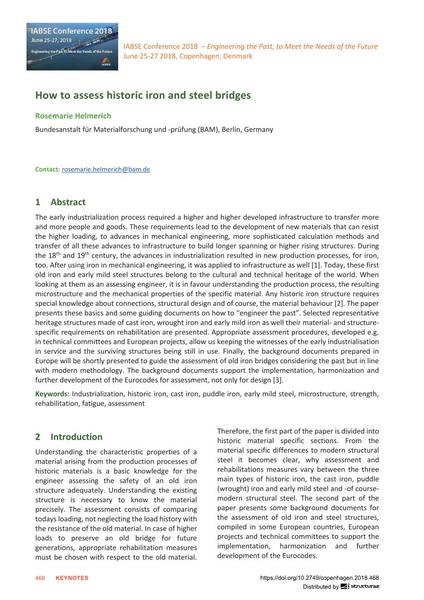|
Abstrait:
|
The early industrialization process required a higher and higher developed infrastructure to transfer more and more people and goods. These requirements lead to the development of new materials that can resist the higher loading, to advances in mechanical engineering, more sophisticated calculation methods and transfer of all these advances to infrastructure to build longer spanning or higher rising structures. During the 18th and 19th century, the advances in industrialization resulted in new production processes, for iron, too. After using iron in mechanical engineering, it was applied to infrastructure as well [1]. Today, these first old iron and early mild steel structures belong to the cultural and technical heritage of the world. When looking at them as an assessing engineer, it is in favour understanding the production process, the resulting microstructure and the mechanical properties of the specific material. Any historic iron structure requires special knowledge about connections, structural design and of course, the material behaviour [2]. The paper presents these basics and some guiding documents on how to “engineer the past”. Selected representative heritage structures made of cast iron, wrought iron and early mild iron as well their material- and structurespecific requirements on rehabilitation are presented. Appropriate assessment procedures, developed e.g. in technical committees and European projects, allow us keeping the witnesses of the early industrialisation in service and the surviving structures being still in use. Finally, the background documents prepared in Europe will be shortly presented to guide the assessment of old iron bridges considering the past but in line with modern methodology. The background documents support the implementation, harmonization and further development of the Eurocodes for assessment, not only for design.
|

